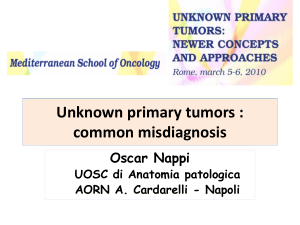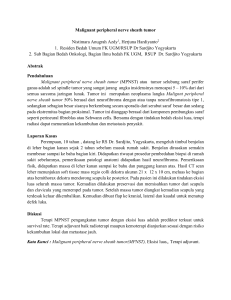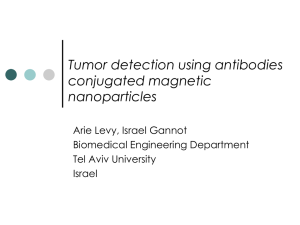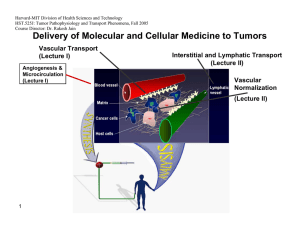Lung
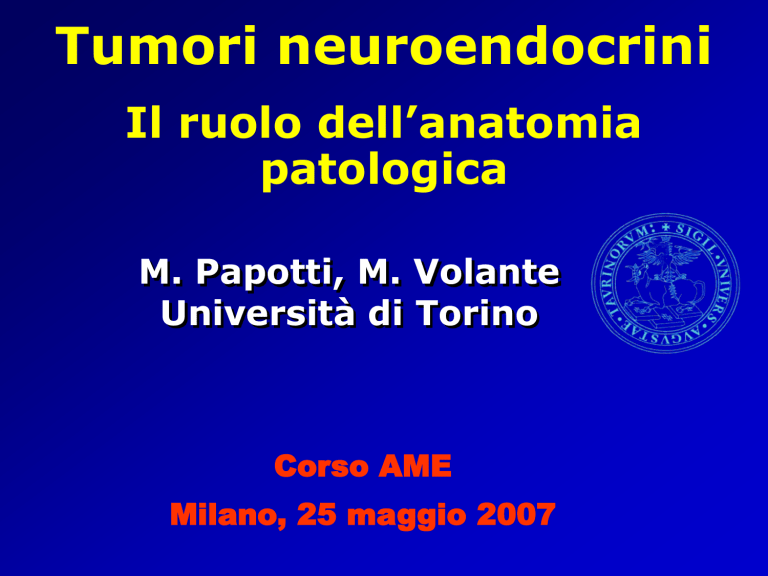
Tumori neuroendocrini
Il ruolo dell’anatomia patologica
M. Papotti, M. Volante
Università di Torino
Corso AME
Milano, 25 maggio 2007
Caro Mauro,
….
Invito del dr R. Cozzi
Riguardo alla tua relazione, considerato il titolo, avremmo piacere che tu affrontassi nel tempo che hai a disposizione 20 min la classificazione del neuroendocrino, i limiti della citologia in rapporto alle scelte terapeutiche, il discorso dei recettori e della loro utilità in pratica clinica.
considera che sarà un corso AME (…) con un taglio decisamente pratico e questo anche per quanto riguarda l'anatomia patologica.
Different diagnostic criteria and classification for
•Medullary thyroid carcinoma
•Pheochromocytoma/Paraganglioma
•Parathyroid adenoma/carcinoma
•Pituitary adenoma/carcinoma
neuroendocrine tumor classification
MENU
- History, Definition & Glossary
- Pathological classification
pure NE tumors
mixed NE/exocrine tumors
- Further characterisation
History
1907 “carcinoid” term
Oberndorfer
1930 carcinoid syndrome
Cassidy
1940/50 “helle zellen”
Feyrter
1952 serotonin discovery
Erspamer & Asero
1963 fore-, mid-, hind-gut carcinoids
Williams & Sandler
1965/70 APUD concept
Pearse
1980 diffuse NE system
WHO
1994 “neuroendocrine tumor” replaces carcinoid
Capella et al
2000 classification of endocrine tumors
WHO
Solcia et al
History
1907
“Karzinoid” term
Siegfried Oberndorfer
6 ileal tumors, slowly growing, no metastases
NE TUMORS
Glossary & Synonyms
• carcinoid, malignant carcinoid
• apudoma
• islet cell tumor
• adenoma / microadenoma vs carcinoma
• Kultchisky cell tumor / carcinoma
• endocrine carcinoma
• endocrine neoplasm
• hormone…-oma
(insulinoma, gastrinoma,..)
• pancreatic (A/B/D/PP)-cell tumor
Neuroendocrine tumor classification
MENU
- History, Definition & Glossary
- Pathological classification
pure NE tumors
mixed NE/exocrine tumors
- Further characterisation
THE BENIGN
THE MALIGNANT
THE CLINICALLY AGGRESSIVE
Clinical
Morphological
WHICH
CLASSIFICATION
CRITERION ????
Hormonal
Ki67
Gene expression
Clinical
Morphological
Hormonal
Ki67
Gene expression
Incidence,
Localisation,
Endocrine function,
Symptoms,
Treatment,
Behavior,
Survival
Clinical
Morphological
Hormonal
Ki67
Gene expression insulinoma
• Single or multiple
• Well demarcated or invasive
Macro
• Size 0.5-15 cm.
• Cystic appearance
• Lymph node mets
• Distant mets
Gastric microcarcinoids
1 cm
Micro Tumor architecture
Clinical
Morphological
Hormonal
Ki67
Gene expression
THE BENIGN
THE MALIGNANT
THE CLINICALLY
AGGRESSIVE
Gross features and structure are not enough for the purpose of identifying homogeneous groups with clinical relevance
CLASSIFICATION PROBLEMS
1994
2000
2000 WHO CLASSIFICATION
• Introduces terms tumor/carcinoma
(vs carcinoid) ….LUNG EXCLUDED
• Replaces neuroendocrine with endocrine
• Incorporates hormonally active tumors
( morpho-functional approach )
• Recognizes mixed exo-endocrine tumors
• Incorporates information on tumor grade
• Introduces criteria of malignancy
(angioinvasion, Ki67 pancreas, only )
Microscopic features of malignancy
• Depth of invasion
• Size of tumor
• Angioinvasion
• High grade cellular atypia
GI NETS
3 TIE SYSTEM for GI NETs
Microscopic features of malignancy
• Invasion of surrounding tissues
• Size of tumor
PANCREATIC
NETs
(>6 cm is suspected)
• High grade cellular atypia
• Focal or diffuse necrosis
• High mitotic index
• Blood or lymph vessel & nerve invasion
• Ki67 > 2%
3 TIE SYSTEM for pancreatic
NETs
Does this system fit with the clinical practice?
Is it easily applicable?
E. Bajetta, L. Catena, G. Procopio, E. Bichisao, L. Ferrari, S.
Della Torre, S. De Dosso, S. Iacobelli, R. Buzzoni, L. Mariani and
J. Rosai
Is the new WHO classification of neuroendocrine tumours useful for selecting an appropriate treatment? Ann Oncol 2005 16:1374
Problem of other non-carcinoid NETs (eg malignant pheochromocytoma, MTC, parathyroid carcinoma, Merkel cell carcinoma, etc…)
Does this system fit with the clinical practice?
Is it easily applicable?
• Benign vs uncertain behaviour in well differentiated pancreatic NETs
• Appendiceal NETs (small & invasive?)
• Mixed endocrine – exocrine tumors
• Use morphology or Ki67 first?
• The new TNM system for foregut NETs
• Extra GEP: pulmonary NETs especially intermediate grades
BENIGN vs UNCERTAIN BEHAVIOR
Benign Uncertain
Extrapancreatic growth
Angioinvasion
Size >=2 cm
Mitoses >2
/10HPF
Ki67 >2% no no no no no no yes yes yes yes
Resembles WD NET (benign), but in general: size >3 cm, mitoses >2,
Ki67 >5% but above all : unequivocal signs of malignancy must be present
LOCAL
INVASION
LYMPHNODE LIVER
FOREGUT NET CLASSIFICATION
Recent proposal of a staging system for foregut NETs and improvement of grading system using mitoses +
Ki67
SPECTRUM OF PULMONARY NETS
TC
AC
SCLC
Difficulties in identifying the intermediate entities
LCNEC
SPECTRUM OF PULMONARY NETS
TC AC
Indolent clinical behavior
Aggressive clinical behavior
SCLC
Significantly different survival
Arrigoni et al 1972
SPECTRUM OF PULMONARY NETS
TC AC LCNEC SCLC
<2 mitoses 3-10 mitoses >10 mitoses small cells no necrosis or necrosis (necrosis) (necrosis)
Significantly different survival p<0.0001
Travis et al
Significantly different survival p<0.0001
Am J Surg Pathol 22,934,1998
NO significantly different survival
SPECTRUM OF PULMONARY NETS
TC AC LCNEC SCLC
TC AC LCNEC
SCLC
Asamura et al JCO
24:70,2006
NO significantly different survival
Degree of differentiation
WELL DIFF.
POORLY DIFF.
LUNG
GEP
TYPICAL
CARCINOID
WELL DIFF. NE
TUMOR benign/borderline
ATYPICAL
CARCINOID
WELL DIFF.
NE
CARCINOMA
SMALL CELL/
LARGE CELL
NE CARCINOMA
MEEC
POORLY DIFF. NE
CARCINOMA
(small/large cell)
LOW GRADE HIGH GRADE
Biological behaviour
Neuroendocrine tumor classification
MENU
- History, Definition & Glossary
- Pathological classification
pure NE tumors
mixed NE/exocrine tumors
- Further characterisation
2000 WHO
CLASSIFICATION
CATEGORIES RECOGNIZED
1 well differentiated endocrine tumor
2 well differentiated endocrine carcinoma
3 poorly differentiated endocrine carcinoma
• 4 mixed exocrine-endocrine tumor
• ( 5 tumor-like lesions)
CGA
Exocrine
Endocrine
NE differentiation in colon cancer
CGA mucin
1995
…..ANY BIOLOGICAL and/or CLINICAL
SIGNIFICANCE??
NO
BREAST and
COLORECTAL
CANCERS
Y/N ?
NSCLC
YES
STOMACH &
PROSTATE
CANCERS non-NE ca.
focal
NE pure non-NE ca.
Non-NE carcinomas with NE differentiation
Breast (WHO2004)
Lung (WHO2004)
GI tract (WHO2003)
Prostate (WHO2003)
>5% NE+ cells
LCNEC of the stomach are significantly more aggressive than conventional ADC.
ADC-NED have also a worse prognosis than conventional ADC
(borderline significance)
Am J Surg Pathol
August 2006
Reduced survival of CGA+ cases
CGA increase during progression
CASE REPORT
July 1996 Nov 1997 Oct 1999 May 2000
Rectal polyp, cancerised
Local recurrence
Pelvic recurrence
April
2007
Stable disease
Rectum resection
ADC stage B1
Radical
Surgery
FNAB
CgA CgA
ChTx 1 RT
CgA
• ChTx 1: 5-FU + folic acid (6x)
• RT: 50 Grey
• ChTx 2: oxaliplatin +
5-FU + folic acid
(12x)
ChTx 2
Oncologia
Prof Dogliotti dr Tampellini
pure
NE tum.
0%
NE tum.
focal non-NE mixed
(intermingled) mixed
(collision)
30% non-NE ca.
focal
NE pure non-NE ca.
100% non-NE
NE
100% 30% 0%
WDET - TC
WDEC - AC
PDEC
–
SCLC/LCNEC
WHO 2000 Endocrine
WHO 2004 lung
Mixed
NE/non-NE carcinomas
WHO 2000
Endocrine tumors
Non-NE carcinomas with NE differentiation
Breast (WHO2004)
Lung (WHO2004)
GI tract (WHO2003)
Prostate (WHO2003)
Degree of differentiation
WELL DIFF.
POORLY DIFF.
LUNG
GEP
TYPICAL
CARCINOID
ATYPICAL
CARCINOID
SMALL CELL/
LARGE CELL
NE CARCINOMA
WELL DIFF. NE
TUMOR benign/borderline
WELL DIFF.
NE
CARCINOMA
POORLY DIFF. NE
CARCINOMA
(small/large cell)
LOW GRADE HIGH GRADE
Biological behaviour
HOW TO BREAK THE ARROW?
LUNG
TYPICAL
CARCINOID
GEP
WELL DIFF. NE
TUMOR benign/borderline
ATYPICAL
CARCINOID MEEC
WELL DIFF.
NE
CARCINOMA
Light microscopy + ……??
LUNG
SMALL CELL/
LARGE CELL
NE CARCINOMA
POORLY DIFF. NE
CARCINOMA
( small/large cell )
GEP
Neuroendocrine tumor classification
MENU
- History, Definition & Glossary
- Pathological classification pure NE tumors mixed NE/exocrine tumors
- Further characterisation
Further characterisation
• hormonal
• Ki 67
• receptors
• molecular
THE BENIGN
THE MALIGNANT
THE CLINICALLY AGGRESSIVE
MARKERS
CGA
SSTR2 Chromogranins
Synaptophysin
N-CAM
Cytoker. 34 b E12
NSE, VMAT
PGP9.5
Neurofilaments
Hormones: calcitonin, bombesin, insulin, glucagon, somatostatin, gastrin, PP, VIP, ACTH, serotonin, …
NEW: ghrelin, cortistatin, obestatin, secretagogin
[Virch Arch 449, 402, Oct 2006]
Further characterisation
• Ki 67 proliferation index
LOW HIGH
2000
KI-67:
DIAGNOSTIC USE
KI-67:
PROGNOSTIC
USE
KI-67 in WD NE carcinoma
1.0
0.9
0.8
0.7
0.6
0.5
0.4
0.3
0.2
0.1
Ki67<5%
Ki67>5%
TTP
P = 0.043
0.0
0 10 20 30 40 50 60
Months
Brizzi et al, 2007 (submitted)
70 80
1.0
0.9
0.8
0.7
0.6
0.5
0.4
0.3
0.2
0.1
0.0
0
Ki67<5%
Ki67>5%
OS
P = 0.017
10 20 30 40 70 80 90 100 110 50 60
Months
Prognostic value if groups are homogeneous (eg all WDCA or
PDCA). Otherwise possible bias due to tumor differentiation
KI-67: USE for Tx STRATEGY
SEQUENTIAL STEPS in the
DIAGNOSTIC PROCESS of the
PATHOLOGIST
1 Use morphology (histopathology + markers) to enter each NET case into homogeneous groups (eg WHO classification criteria)
2 Within each group , analyse known
(eg Ki67) or new prognostic markers
3 Analyse molecules useful for targeted therapy , if requested
SOMATOSTATIN RECEPTORS (SSTR)
The pathologist has to search for SSTR presence in a tumor (YES/NO) and, if
YES, provide information on SSTR subtype
PROBLEM 1: What to search for?
selective SRIF analogs for single SSTR subtypes vs universal analog for all SSTR subtypes
PROBLEM 2: How to identify SSTRs?
How to identify SSTRs?
1 Autoradiography
2 RT-PCR / ISH
3 Immunohistochemistry
•Accessible to all laboratories
•Low cost
•Commercial antibodies [??]
•Applicable on archival tissues sst2
•Applicable on biopsies and FNAs
•Identifies SSTR type (1-5) [??]
•Need to standardize interpretation
Which SSTR antibodies for IHC ??
predominant membrane staining for SSTR2
Main goal of SSTR localisation: provide information correlated with clinical data
Correlation SSTR-IHC with
Octreotide scintigraphy
Surgical samples
(lung)
88% (22/25 cases) sst2 bronchial biopsy
Surgical specimen
Collaborative project on SSTR2A IHC in correlation with in vivo data
107 cases of NET with variable degrees of differentiation and different locations, all with
Octreoscan and/or information on clinical response to SS analogues (from Universities of
Turin, Varese and Naples)
Complete clinicopathological data
IHC for SSTR2A using 3 different commercial polyclonal Abs
Proposed IHC score for SSTR2
(
based on
staining pattern)
1+ or +/-
2+
2+
…2.5+?
Case 2187A/2187B
NE tumor
3+
Score 0 Score 1 Score 2 Score 3
(Negative)
SUBCELLULAR PATTERN
Pure cytoplasmic
Membranous incomplete
Membranous circumferential
EXTENSION OF POSITIVE TUMOR CELL POPULATION
(Absent) 1-100% <50% >50%
50%
CONCORDANCE WITH OCTREOSCAN DATA
54% 87% 94%
Correlation SSTR2 IHC with in vivo data
107 cases =
70 WD NET/CA
18 PD NE CA
9 MTC
10 others
-
+
IHC score:
0 totally negative
1 cytoplasmic +
2 focal membrane +
3 diffuse membrane +
Concordance IHC/Octreoscan: 77%
(82/107 cases)
61 IHC+/OS+
21 IHC-/OS-
(19/25 discrepant cases being IHC-/Octreoscan+)
Concordance IHC/SS analogue response: 81%
(21/26 cases)
Thank you!!!
University of Turin at San Luigi Hospital, Orbassano
NSG NSG+MUC MUC
Pure NE cell Amphicrine cell
Pure non-NE cell (i.e. mucinous)
sst in endothelia, necrosis and intratumoral lymphocytes
SqCa sst3
LCNEC
SUMMARY OF OBSERVED STAINING
PATTERNS IN sst IHC sst2 : predominant membrane
(cytoplasmic possible, if weaker than membrane ) sst3 : cytoplasmic (with membrane increase) sst5 : membrane and cytoplasmic
sst2A IHC expression in 71 NE tumors of the lung
Typical carcinoid
SCLC (10)
(24) score 0/1 score 2/3
Atypical carcinoid (20) score 0/1 8 score 2/3 12 (60%)
LCNEC (17) score 0/1 score 2/3
7
10 (59%) score 0/1 score 2/3
4
20 (83%)
4
6 (60%)
